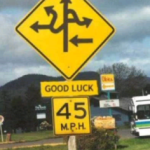Last week’s mindmap post went off into some rabbit trails of metaphoric connections, so I thought I’d revisit the nodes I posted last week to explain their function (as well as add a few more nodes): http://popplet.com/app/#/1571354
After our in-class activity of examining photos, I thought of a writing activity I had recently assigned my Basic Writing students as part of their narrative essay assignment. I asked them to collect images of a place that represented a “before and after / then and now” moment of change in their lives. The intent was to get them to “tell the story” aloud to their writing workshop groups as a way of creating an oral outline map of how they envision this narrative’s form and purpose. So when we were asked to do something very similar using our writing practices images, I thought about how this activity deepened my concept of seeing such moments as borders of creativity and agency, which I had made a popplet box last week “Actors vs. Borders: Where the Real Action Happens.” Such focus on the spatial ecologies inherent to our writing was not only effective for my Basic Writing students, but for our classroom as well. Our in-class discussion of Actor Network Theory that followed “theorized” this exercise in a way that helped clarify some of Latour’s more difficult-to-grasp concepts, specifically mediator vs. intermediary. I’m still working on nailing down those two terms, but our discussion led me to think that what we identify as mediator in one instance might be explored in terms of intermediary functions in another. Our example: technologies as tools. Leslie made the point in class that when we start analyzing these tools of writing, they behave as “actants” when ANT is applied, but AT presents them as tools. However, the transformative power that ANT claims is agency is ascribed to the activity in AT. This “hair splitting” was causing me to blur the boundaries between these two theories (one reason why I’m drawn to Spinuzzi’s approach from last week’s reading).
 Then came the visual provided by Dr. Romberger…the asterisk field. As she pointed out, Latour wants us to think of nodes as staging points for multiple incoming action, “tracing everything that comes before, moves into [the node]” (Dr. Romberger). That makes me think of the social, of course, but also the cultural historical of CHAT, the notion of constant motion, of undetermined vector possibilities. Boundaries become visible if — as Latour suggests — we focus on the activity around it. Again, I cannot help but think of the black hole reference mentioned earlier in the term. We “see” the black hole — a space of great energy and power, a node of intense activity — only by observing the activity surrounding it. So, it might be appropriate to say that the agency is not in the power of the black hole (the node) but in the revealing potential of what is NOT the black hole. The differences. The space outside the node.
Then came the visual provided by Dr. Romberger…the asterisk field. As she pointed out, Latour wants us to think of nodes as staging points for multiple incoming action, “tracing everything that comes before, moves into [the node]” (Dr. Romberger). That makes me think of the social, of course, but also the cultural historical of CHAT, the notion of constant motion, of undetermined vector possibilities. Boundaries become visible if — as Latour suggests — we focus on the activity around it. Again, I cannot help but think of the black hole reference mentioned earlier in the term. We “see” the black hole — a space of great energy and power, a node of intense activity — only by observing the activity surrounding it. So, it might be appropriate to say that the agency is not in the power of the black hole (the node) but in the revealing potential of what is NOT the black hole. The differences. The space outside the node.
I still think Latour overplays the ANT vs. AT dominance at times — I’m not always sure his insistence on actant vs. activity is a consistently stable reference point (perhaps his point). However, the revelatory possibilities of ANT, as a way to make us see outside the familiar methods of analysis or “nostalgia,” is incredibly valuable, given our assertion that networks — to remain relevant — must be seen as dynamic and open to growth / evolution.
Bring on the asterisks.



2 Responses to MindMap for 4 March – filling in the blanks